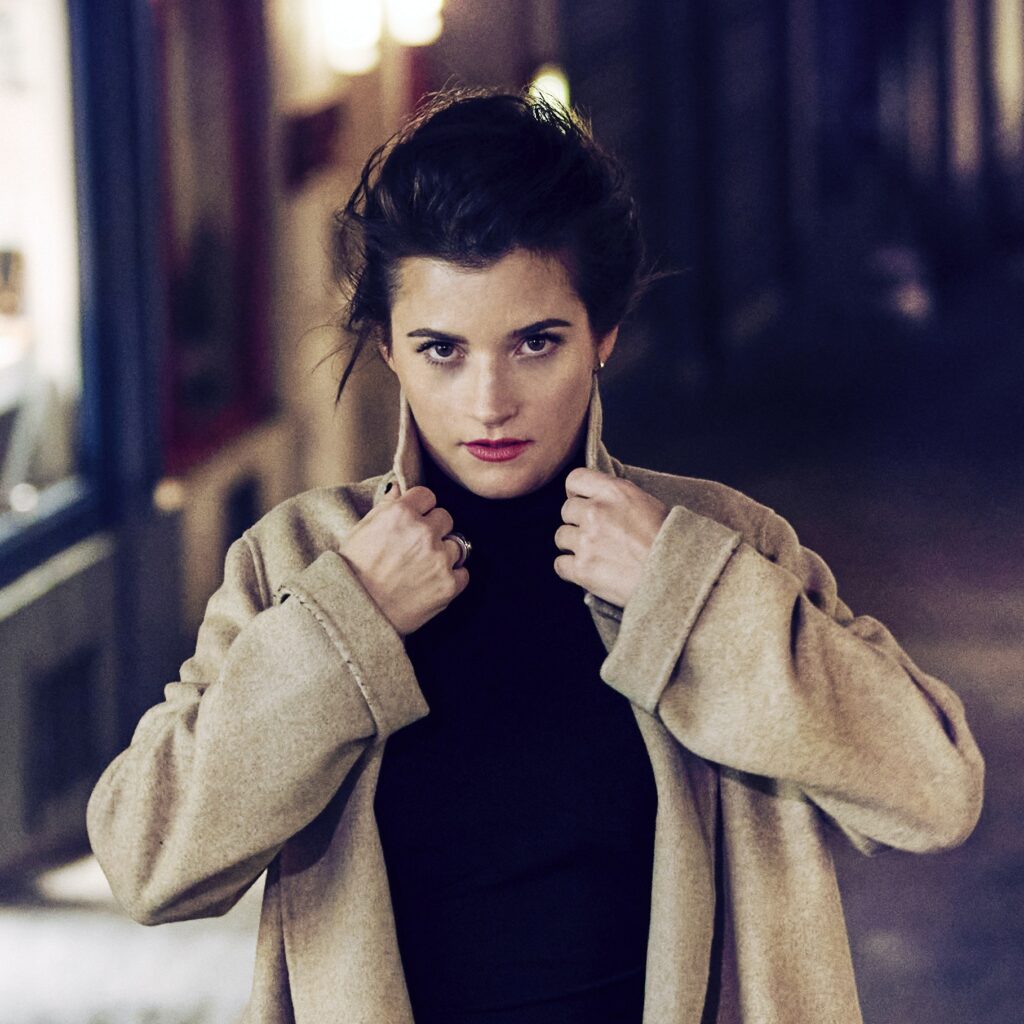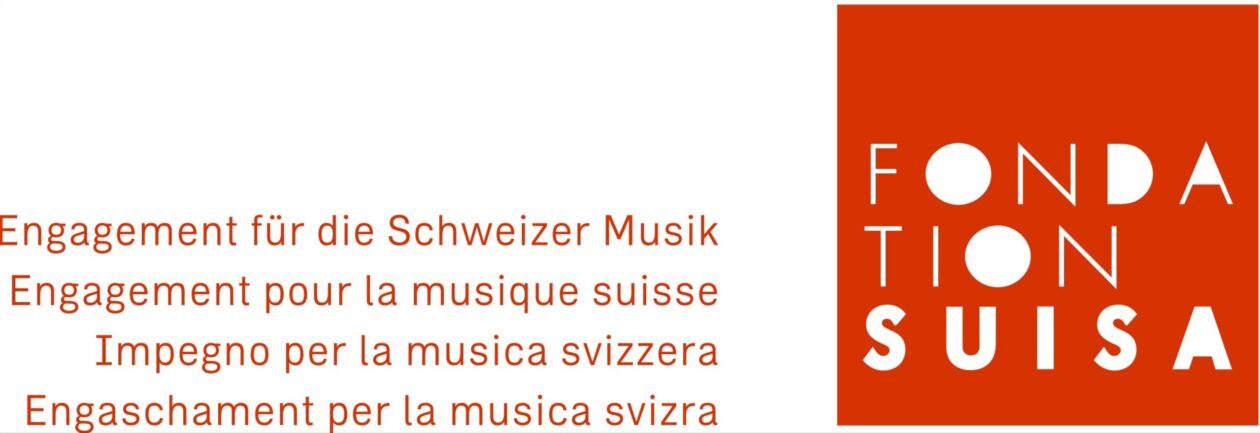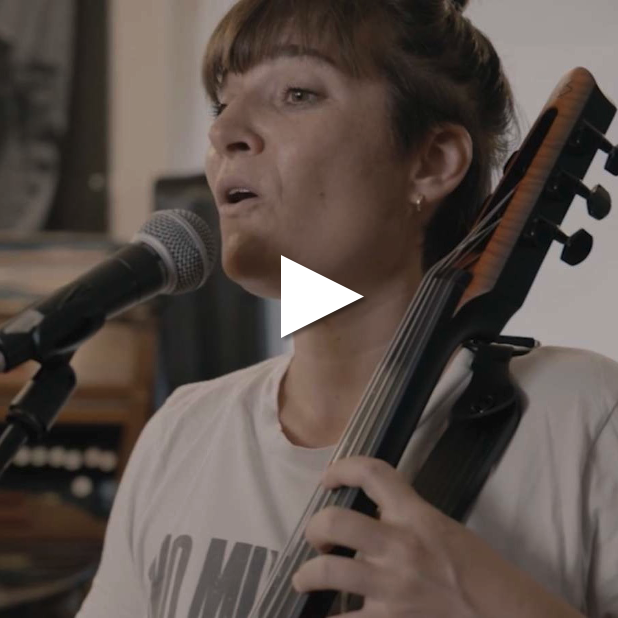2022 «Get Going!» Portrait Series

The ear as a microphone and an instrument; the brain as a mixing desk and the body as an individually perceptible subwoofer: with her new project “Coiled Continuum”, Céline-Giulia Voser – alias Cégiu – wants to turn music into a physically tangible experience. FONDATION SUISA is supporting her with “Get Going!” funding.
In Cégiu’s music, the texture of the surface features only briefly – merely in the first few seconds of a song, when it first comes into contact with the listener’s ears. After that, the music transforms into a vortex, into an intricately woven, meandering labyrinth that wends its way deep inside the subconscious of the listener and juggles with their emotions. Over the course of three albums, Cégiu has now got this down to a fine art: on “Skinny Souls” (2016), “Restless Roots” (2019) and “Glowing Goodbyes” (2021), her use of several languages not only topples the tower of Babel but also creates new and more intricate acoustic wefts along the way, which have the power to sound some unusual notes on the listener’s keyboard of emotions. In this way, the 39-year-old native of Central Switzerland, who has roots in Friaul and West Switzerland, manages the great feat of transferring the catharsis inherent in her music onto others.
One of her songs on “Restless Roots” is called “Il Silenzio – n’existe pas”, and it contains pretty much every element that makes a Cégiu composition so distinctive: she has experienced this non-existent silence with her own body when her family moved to an apartment building that sits adjacent to a castle park and is exposed to a vast amount of traffic noise. “Suddenly”, Cégiu says, “I could hear my own body, the rushing of blood in my ears”. The despair that follows in the footsteps of this insight is vocally transformed into sound through whispers and shouts, and verbally born aloft in four different languages. “Growing up in a multilingual household, I noticed from a young age that certain states of mind or feelings can be expressed more eloquently in one language than in another.” “Dream on mon coeur”, she whispers over an abstracted, perennially circling cello that wanders through all the states of matter during the course of the piece.
The effect of music on our brain, on our body – this is also Cégiu’s focus in her current project, for which FONDATION SUISA will support her with “Get Going!” funding. She calls it “Coiled Continuum”, and the name says it all. Within this sealed, ever-revolving continuum, Cégiu wants to work with other cultural creators by passing on the products of her creative endeavours to others for them to process further and then in turn play the results back to Cégiu.
“I am fascinated by the image of a continuously revolving spiral”, she says. “I want to integrate this approach at all levels of the project, whether that’s my own workflow, the collaborations themselves, or at the level of critical engagement. A constant back and forth, not least also in reference to how our lives actually work.” She is already in dialogue with the musician and producer Anna Murphy and the slam poet Dominique Macri, as well as the photographer Gian Marco Castelberg and – for the visual concept – with Bartholomäus Zientek. Others will follow. “Because we now live in a world strongly defined by visuality, I am also seeking interdisciplinary dialogue in this arena.”
In terms of its content, the theme of the project revolves around psycho-acoustic perception, something that the composer and installation artist Maryanne Amacher (1938–2009) engaged with intensively. “The ear”, Cégiu explains, “can not only perceive sounds but also generate its own, something that can be provoked with a stimulus”. The aim is to stimulate the ear and the brain to develop their own sounds when listening to music: “The hope is to create a new physical experience so that music becomes physically tangible.” This should be possible not just when streaming music (using headphones), but also live: “My dream would be that I can utilise the respective space and people’s behaviour in such a way that they in turn influence me on stage and that the audience thereby becomes part of the band.” In this context, and as with all of Cégiu’s work, beats play a defining role. For this purpose, she used the sounds of trolley suitcases in “Restless Roots” and the noise of insects on “Glowing Goodbyes”; now, the incidental noises made by the mouth when leaving voice messages are to be used to create the complex rhythms of the music.
Even though the result of “Coiled Continuum” is to become a complete work in the form of an album, Cégiu wants to use the possibilities afforded by digital technology to create a kind of audio diary during the work process. She feels that this visibility facilitates dialogue with others and thus also becomes part of the continuum.This form of working, this intensive engagement with the theme, all requires time and money. “This form of support from FONDATION SUISA, where no end-result and no timeframe have to be defined at the outset, provides incredible creative freedom that allows you to take risks”, Cégiu says when outlining the benefits of “Get Going!”. She feels that this is the only way to deeply engage with the work.
Rudolf Amstutz
«Get Going!» has existed as a FONDATION SUISA funding offer since 2018. With this new form of a grant, creative and artistic processes that do not fall within established categories are given a financial jump-start. At monthly intervals, we present the eight recipients of the 2022 «Get Going!» grant individually.

